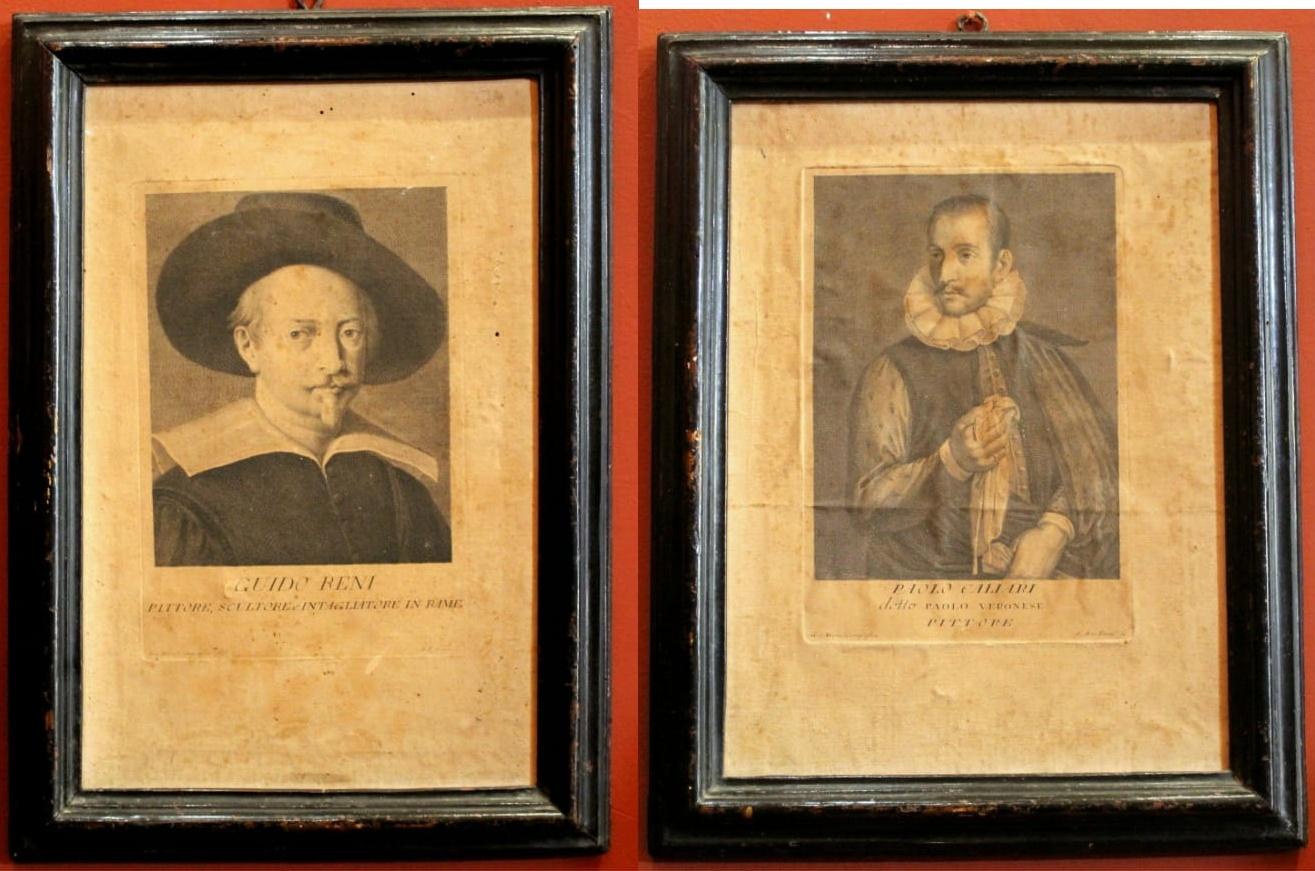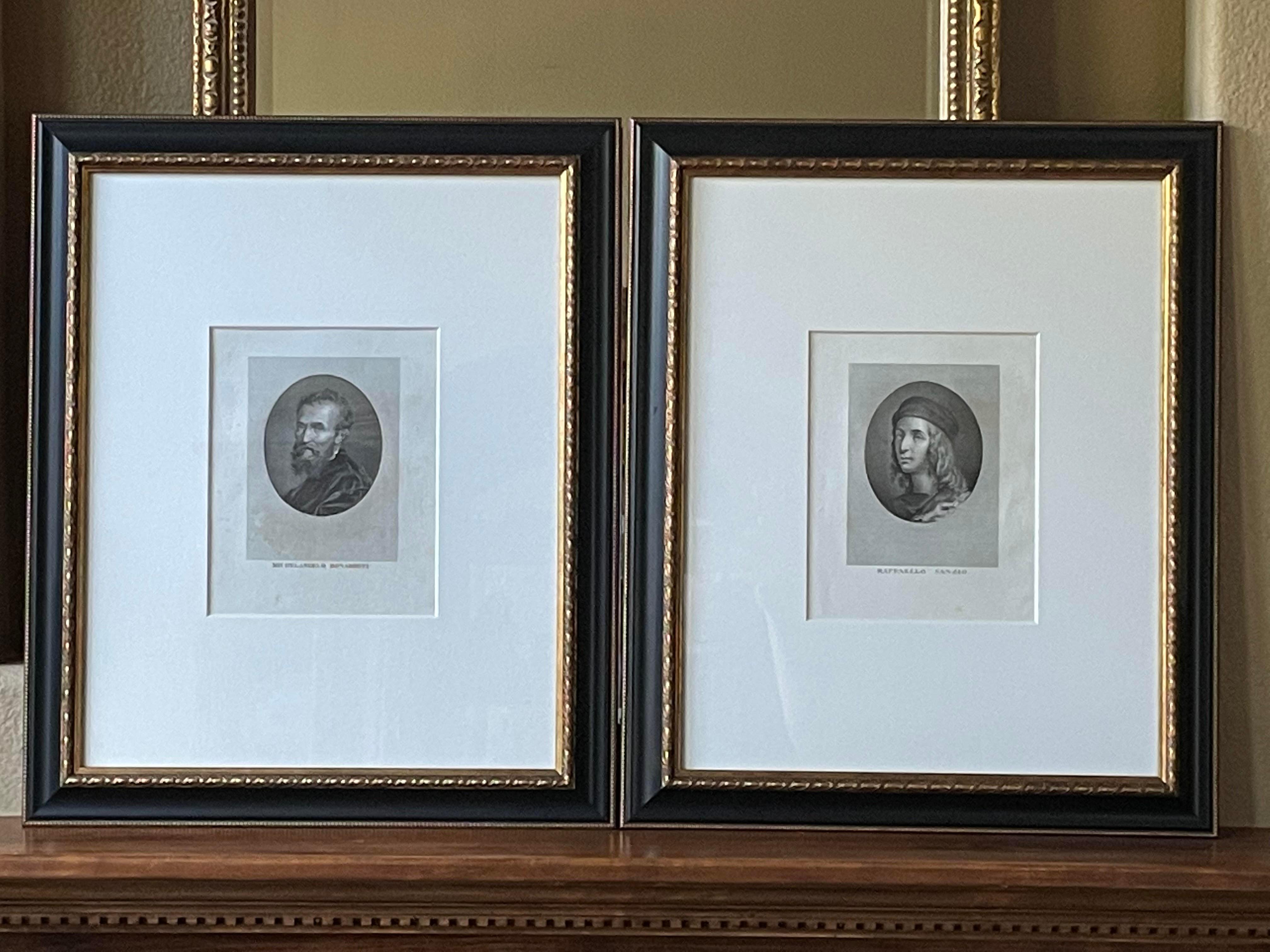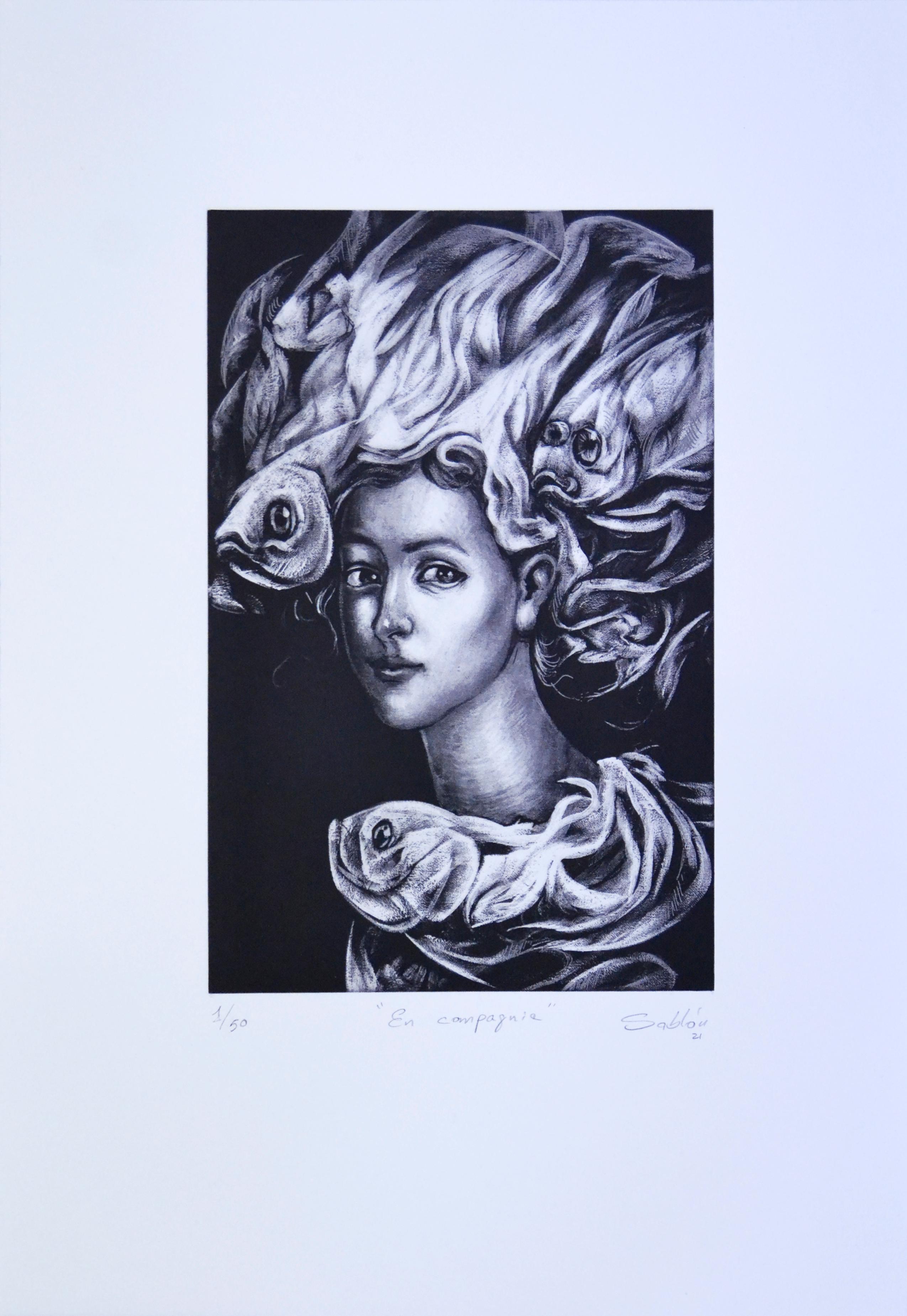Items Similar to Captain James Cook: 18th C. Portrait by William Hodges After Cook's 2nd Voyage
Want more images or videos?
Request additional images or videos from the seller
1 of 6
William HodgesCaptain James Cook: 18th C. Portrait by William Hodges After Cook's 2nd Voyage 1777
1777
About the Item
This is an original 18th Century copper plate engraved portrait of Captain James Cook as a young man. It was engraved by J. Basire after a painting by William Hodges, published in London by W. Strahan and T. Cadell in the Strand in 1777 as the frontispiece to the official journal publication of Cook's 2nd voyage of discovery, "A voyage towards the South Pole, and round the World. Performed in His Majesty's ships the Resolution and Adventure, in the years 1772, 1773, 1774, and 1775". The journal was written by James Cook, Commander of the Resolution, which was the ship used for the voyage and William Hodges, who was the artist on board the ship. This famous image has been used in many articles and tributes to Captain Cook, including a Norfolk Island stamp celebrating his many accomplishments.
This engraved head-and-shoulders portrait of Captain Cook is enclosed in an oval with the appearance of a stone border. Captain Cook is dressed in his naval dress uniform, with a topcoat over a lace shirt. The engraving is printed on watermarked laid, chain-linked paper. The sheet measures 11.5" high x 9" wide. There is some spotting, most prominently in the margins. The print is otherwise in excellent condition.
Captain James Cook (1728-1779) was an English explorer, navigator, surveyor and cartographer, who dramatically changed what was known about the world through his three voyages of discovery in the 1770's. Cook's achievements are too numerous to include here, but for example, Cook charted much of the Pacific Ocean and discovered many island groups, including the Hawaiian islands, which he named the Sandwich Islands, in honor of the head of the British Admiralty and a patron of Cook's. Cook was the first European to explore the eastern coast of Australia, and he was the first to map the New Zealand coastline. He sailed farther south than any other explorer before him, disproving the belief that a huge land mass occupied the South Pole. He also explored the northwest coast of North America, including present day Alaska and adjacent portions of Russia. He proved that the Northwest Passage did not exist.
Cook was an exceptional seaman, navigator and leader of men, which contributed to the success of his explorations, but also saved his ship and crew on many occasions when faced with challenges, such as storms in previously unexplored waters, like occurred in the Great Barrier Reef off the eastern coast of Australia. He is also the first to require his crew to eat citrus fruit which markedly reduced the incidence of survey, which had led to large scale illness and death during earlier ocean voyages. As outstanding as Cook's skills were, they are even more impressive since they were self-taught. Having grown up the son of a farmhand in Northern England he had only four years of formal schooling. He taught himself astronomy, mathematics and other disciplines which were helpful when he continued his education, first in the merchant marine and then in the British Navy. Cook's adventurous career came to a sudden and unfortunate end in 1779, when he was killed in a confrontation with Hawaiian natives in Kealakekua Bay on the Kona coast of the big island of Hawaii.
- Creator:William Hodges (1744 - 1797)
- Creation Year:1777
- Dimensions:Height: 11.5 in (29.21 cm)Width: 9 in (22.86 cm)
- Medium:
- Period:1770-1779
- Framing:Framing Options Available
- Condition:
- Gallery Location:Alamo, CA
- Reference Number:
About the Seller
5.0
Vetted Seller
These experienced sellers undergo a comprehensive evaluation by our team of in-house experts.
Established in 2011
1stDibs seller since 2019
233 sales on 1stDibs
Typical response time: 1 hour
- ShippingRetrieving quote...Ships From: Alamo, CA
- Return PolicyA return for this item may be initiated within 7 days of delivery.
More From This SellerView All
- Marquis de Marigny: An 18th C. Wille Engraved Portrait after a Tocque PaintingBy Louis TocquéLocated in Alamo, CAThis is a mid 18th century engraved portrait of Abel François Poisson de Vandières, Marquis de Marigny by Jean Georges Wille after a painting by Louis Tocque...Category
Mid-18th Century Portrait Prints
MaterialsEngraving
- N. Lambert Seigneur de Thorigny: 17th C. Engraved Portrait After LargillièreBy Nicolas de LargillièreLocated in Alamo, CAThis is a 17th century engraving entitled "Messire Nicolas Lambert Seigneur de Thorigny, Conseiller du Roy" by Pierre Drevet after a painting by Noicolas de Largillière, published in Paris in 1698. This portrait depicts a three-quarter length view of Nicolas Lambert de Thorigny, who is dressed in elaborate robes and collar of a wealthy Parisian nobleman of the time. He is seated directed to the left and looking directly at the viewer. He is holding an inscribed note in his right hand. A magnificent billowing curtain is in the background. Lambert's coat of arms is shown in the center of the lower inscription area. In the inscription area is lettered with title, production detail: "Nic. Largilliere pinxit" and "Petr. Drevet sculpsit", and publication detail: "Se vend a Paris chez Drevet rüe du Foin au coin du College de Maître Gervais". Nicolas Lambert, Seigneur de Thorigny (1600-1664), was a French nobleman and military commander who lived in the 17th century. He served in the French army during the Thirty Years' War, a conflict that took place from 1618 to 1648 and involved many European powers. Lambert fought in several battles during the war and rose to the rank of colonel. After the war, Lambert returned to France and became involved in politics. He served as a member of the Estates General, a legislative body that advised the king, and as a governor of several provinces. He was a counsellor and confidant of King Louis XIV. He had the title of Président de la Chambre des Comptes. He also became a member of the French Academy of Sciences, a prestigious institution that promotes scientific research and scholarship. Lambert was known for his military expertise, his intelligence, and his commitment to public service. He iInherited the Hôtel Lambert in Paris from his brother Jean Baptiste in 1644 and hired some of the most prominent artists of the time, including Charles Le Brun to decorate and furnish the building. This beautiful old master engraving was created with impressive detailed technique. It is printed on laid, chain-linked paper. The sheet measures 18.5" high and 13.38" wide. The sheet is adhered to an archival backing paper at the top. There is a faint horizontal center fold and mild discoloration in the inscription area and in the upper margin on the right, with mild wrinkling here. The print is otherwise in very good condition, considering its age. This engraving is so rare, that no comparable prints could be identified for sale online. It is currently only listed in museum collections, including: The Metropolitan Museum of Art, The British Museum, The Louvre, The Riksmuseum, The Victoria & Albert Museum, The Fitzwilliam Museum at the U. of Cambridge, The Boston Museum of Fine Arts, Harvard Art Museums, The Finnish National Museum, The Philadelphia Museum. It is shown in the Metropolitan Museum's Cataloque of French paintings entitled: "French Paintings in The Metropolitan Museum of Art, published in 2018, page 36. The page is included in the photos. Nicolas de Largillière (1656-1746) was a French portrait painter who achieved great success and acclaim during the late Baroque and Rococo periods. He was born in Paris and trained under the painter Antoine Goubeau. He studied in Antwerp and London before returning to France. While in England he was a favorite painter of King Charles II and King James II of England...Category
Late 17th Century Portrait Prints
MaterialsEngraving
- The Duchess of St. Albans: A 17th C. Portrait After a Kneller PaintingBy (After) Sir Godfrey KnellerLocated in Alamo, CAThis is a 17th century engraved mezzotint portrait of the Duchess of St. Albans by John Smith, after a painting by Sir Godfrey Kneller. It was published in London by John Boydell in 1694. The Duchess of St. Albans (1642-1712) was a woman named Diana de Vere. She was born in 1642, the daughter of Aubrey de Vere, the 20th Earl of Oxford. In 1662, she married Charles Beauclerk, the illegitimate son of King Charles II and his mistress, Nell Gwyn. As a result of her marriage, Diana became the Duchess of St. Albans, and she and Charles had several children together. Diana was known for her beauty and charm, and she was a prominent figure in the court of King Charles II. Despite her husband's illegitimate birth, Diana was highly respected in the royal court and was known for her intelligence and wit. She was a patron of the arts and supported many artists and writers of the time. Diana lived through a tumultuous period of English history, including the Great Fire of London and the Glorious Revolution, which saw King James II replaced by William of Orange. She died in 1712 at the age of 70 and was buried in Westminster Abbey. Descendants of Diana and her husband, who was an illegitimate son of King Charles II, include Diana, Princess of Wales and her son William, Duke of Cambridge. An author wrote of her: "The line of Vere, so long renown’d in arms, Concludes with luster in St. Albans’s charms; Her conquering eyes have made their race complete, It rose in valor, and in beauty set." This striking mezzotint engraving depicts Diana, Duchess of St Albans in a three-quarter length pose, standing, wearing loose flowing dress and a wrap. She has a very serene, calm appearance as she is looking straight at the viewer. There is a landscape of trees in the background. The print is adhered in the corners to an archival backing, which is itself adhered in the upper corners to a larger backing. The print is trimmed to just beyond the plate mark. There are areas of discoloration in the margins and in the inscription area, but the print is otherwise in very good condition. The sheet measures 14.5" high and 10" wide. This mezzotint is held by multiple museums and institutions, including The British Museum, The National Portrait Gallery London, The Fine Arts Museum of Boston, The Lewis Walpole Library at Yale, The Yale Center for British Art, The Fitzwilliam Museum at Cambridge and The National Galleries of Scotland. The original Kneller painting is part of the British Royal Collection Trust and hangs in the King's Private Dining Room at Hampton Court Palace. Sir Godfrey Kneller (1646-1723) was a leading portrait painter of his time, particularly renowned for his depictions of the British aristocracy and royalty. He was born in Lübeck, Germany, and trained in Amsterdam under the painter Ferdinand Bol...Category
Late 17th Century Portrait Prints
MaterialsMezzotint
- Elizabeth, Countess of Northumberland: Mezzotint After a Painting by J. ReynoldsBy Joshua ReynoldsLocated in Alamo, CAThis is an 18th century mezzotint portrait of Elizabeth, Countess of Northumberland, Baroness Percy by Richard Houston after a painting by Joshua Reynolds, published in London by Robert Sayer in 1763. It is a rare, full length portrait of Elizabeth, who was known as Lady Betty. Lady Betty stands, facing to the right, holding her coronet, and wearing her peeress’s ermine and velvet robes over a brocade dress. In the background are a column, a billowing drape, and the grounds of Alnwick Castle...Category
Mid-18th Century Portrait Prints
MaterialsMezzotint
- Parmigiani Amica: An 18th Century Engraving and Etching by Strange After MazzolaLocated in Alamo, CAThis is an 18th century engraving and etching entitled "Parmigiani Amica" by Robert Strange after a painting by Girolamo Francesco Maria Mazzola, better known as Parmigianino, who lived during the Renaissance period. It was published in London in 1774. As the inscription states, the painting was in the collection of the King of Naples at the time the engraving was made. The engraving depicts a half-length portrait of a young woman, known as Parmigiani's Amica (meaning "female friend" in Italian). She is depicted wearing a simple but elegant dress with a low-cut neckline, which reveals her delicate features and graceful neck. Her hair is arranged in a simple yet stylish manner. She is turning to the right to look lovingly at her infant, which she is holding with her right arm. She is touching the baby's mouth with her left hand. The background of the engraving is plain and unadorned, allowing the viewer to focus entirely on the subject of the portrait. The result is a beautiful and timeless image that captures the essence of Renaissance portraiture. The engraving is printed on watermarked paper. The sheet measures 16.25" high and 12' wide. The sheet is adhered to paper in its upper corners and it has been removed from the paper in its lower corners. There is some mild discoloration and some wrinkling in the margins, including the lower inscription area, and a small dark spot in the upper margin, which may represent a drop of ink occuring at the time of printing. These issues do not involve the image, which is in very good condition. The print is held by several museums and institutions, including: The Metropolitan Museum of Art in New York, The British Museum in London, The Royal Museums of the UK, The British National Trust...Category
Late 18th Century Portrait Prints
MaterialsEngraving, Etching
- Johannes Wesselius Portrait: An 18th Century Engraving/Etching by HoubrakenBy Jacobus HoubrakenLocated in Alamo, CAThis is an 18th century engraved and etched portrait of Johannes Wesselius by Jacobus Houbraken after a painting by Jan Maurits Quinkhard. It depicts a half-height image of Wesselius...Category
Mid-18th Century Old Masters Portrait Prints
MaterialsEngraving, Etching
You May Also Like
- Italian Painter’s Portrait Engravings on Laid Paper on Canvas in Ebonized FramesLocated in Firenze, ITThese beautiful Italian 18th Centruy engravings on laid paper feature the portrait of two famous Italian painters: Veronese and Guido Reni. They were engraved by Pier Antonio Pazzi a...Category
18th Century Baroque Portrait Prints
MaterialsCotton Canvas, Laid Paper, Engraving
- Anthony van Dyck, Engraving Ernest de Mansfeld, c. 1654, Portrait, IconographieBy (After) Anthony Van DyckLocated in Greven, DEA wonderfully detailed and charismatic portrait, this exquisite work illustrates the technical mastery and artistic vision of Van Dyck. Ernest de Mansfeld's stately yet approachable expression reflects Van Dyck's refined ability to comfort and relax his subjects, resulting in a realistic and acute portrait. Ernest de Mansfeld was a German military commander during the early years of the Thirty Years War. Donning his armor and an ornate, lace collar, de Mansfeld appears as a strong commander. Without a hint of a smile, he calmly gazes out, the definition of cool and collected. Van Dyck accurately captures the sense that de Mansfeld is a man who takes his job seriously, a man worthy of commanding an army in battle. This portrait is a Mauquoy-Hendrickx State II (of II), engraved by Robertus van Voerst in collaboration with Anthony van Dyck (Antwerp, 1559 - London, 1641) as part of his Iconographie series of engraved portraits of famous people...Category
17th Century Baroque Portrait Prints
MaterialsEngraving
- Pair of Early 19th Century Engravings of Raffael & MichelangeloLocated in San Antonio, TXPair of early 19th century engravings of Raffael and Michelangelo, professionally framed in modern frames with classic white mat...Category
Early 19th Century Renaissance Portrait Prints
MaterialsEngraving
- Cuban Contemporary Art by Carlos Antonio Sablon - En CompagnieBy Carlos Antonio Sablon PerezLocated in Paris, IDFEngraving on paper - limited edition Carlos Sablòn Perez is a Cuban artist born in 1981 who lives & works in Châlons-en-Champagne, France. His talent is quickly recognized in the fo...Category
2010s Contemporary Portrait Prints
MaterialsPaper, Engraving
- Argentinian Modern Art by Antonio Seguí - La Maîtresse et son ChienBy Antonio SeguíLocated in Paris, IDFLa Maîtresse et son Chien 2018 Carborundum printmaking on papier Mâché, ed. 11/30 45,5 x 31,5 cm & image with the scene 32 x 25 cm Sold with a white frame Carborundum mezzotint is a printmaking technique in which the image is created by adding light passages to a dark field. It is a relatively new process invented in the US during the 1930s by Hubert Mesibov, Michael J. Gallagher, and Dox Thrash...Category
2010s Contemporary Portrait Prints
MaterialsPapier Mâché, Mezzotint, Etching
- Self Portrait by Jim Dine (plate four from Self Portraits portfolio 1971)By Jim DineLocated in New York, NYJim Dine, Self Portrait drypoint on Hodgkinson Hand Made Tone-Weave paper Paper 18 x 14 in. / 46 x 36 cm Plate 8 x 6 in. / 20 x 15 cm plate one from Self Portraits (1971) portfolio ...Category
1970s Realist Portrait Prints
MaterialsEtching, Drypoint



